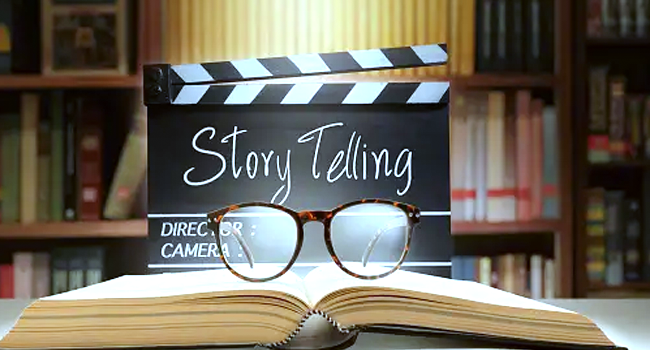The system of adapting bestselling novels into movies has long been a staple of the entertainment enterprise, allowing filmmakers to deliver loved memories to existence at the silver display and captivate audiences with visually lovely and emotionally resonant cinematic reports.
From undying classics to modern bestsellers, the adventure from web page to screen is fraught with demanding situations and innovative decisions, as filmmakers try to honor the supplied cloth even as also crafting a compelling narrative that interprets correctly to a visible medium.
In this text, we will discover the fascinating international of ebook-to-film variations, examining the thrill and pitfalls of bringing bestselling novels to the big screen and the enduring attraction of this age-vintage practice.
1.The Appeal of Book-to-Film Adaptations:
Book-to-film adaptations uniquely appeal to filmmakers and audiences alike, supplying the chance to experience acquainted stories and characters in a new and visually immersive layout. For filmmakers, adapting a bestselling novel right into a movie allows paintings with wealthy supply cloth and set up fanbases, even tapping into the integrated marketability of well-known literary assets.
For audiences, e-book-to-movie variations offer a risk to see their preferred stories come to lifestyles in bright detail, with the introduced pleasure of seeing how the filmmakers interpret and produce to lifestyles the liked characters and settings from the pages of the e-book.
2.The Challenges of Adaptation:
Despite their appeal, ebook-to-movie variations pose several challenges for filmmakers, as they ought to navigate the complexities of condensing a sprawling narrative right into a two-hour movie while making creative picks that stay trustworthy to the essence of the source material.
One of the most significant challenges of the version is figuring out what to consist of and what to pass over, as filmmakers should often streamline plots, condense characters, and miss subplots to fit the constraints of the cinematic medium.
Additionally, adapting a bestselling novel into a film requires striking a delicate stability between staying real to the authentic textual content and making modifications that enhance cinematic enjoyment. This mission requires careful consideration and collaboration between filmmakers and authors.
3.The Art of Screenwriting:
At the coronary heart of every hit e-book-to-film model lies a nicely crafted screenplay that correctly translates the essence of the supply material into a visible narrative.
Screenwriters tasked with adapting bestselling novels into films face the daunting challenge of distilling complex plots, multifaceted characters, and rich thematic elements into a screenplay devoted to the unique textual content conducive to cinematic storytelling.
To acquire this, screenwriters must possess a deep know-how of the source fabric and a keen consciousness of the specific needs and conventions of the film medium, letting them efficiently translate the essence of the novel into a compelling and visually enticing screenplay.
4.The Importance of Casting:
Casting performs a crucial function in achieving any e-book-to-movie version because the actors selected to paint the characters from the radical can greatly affect the target audience’s perception and leisure of the movie.
Finding the precise actor to deliver a loved literary man or woman to existence requires cautious attention and deep information about the individual’s personality, motivations, and tendencies, in addition to the actor’s capability to encompass those features on screen.
When carried out successfully, casting can elevate an e-book-to-film model, imbuing the characters with depth, nuance, and authenticity that resonates with audiences long after the credit has rolled.
5.The Role of Direction and Visual Design:
In addition to casting, the course and visible design of an e-book-to-film model play an essential position in shooting the source material’s essence and immersing audiences in the story’s world.
Directors tasked with adapting bestselling novels into movies have to possess an eager understanding of the subject matters, tone, and visual fashion of the source fabric, in addition to a clean, imaginative, and prescient of how to translate these elements right into a cinematic experience this is each trustworthy to the unique textual content and visually charming.
From set layout and costume alternatives to cinematography and visual consequences, each factor of the film’s aesthetic should be painted in concord to create a cohesive and immersive global that transports audiences into the coronary heart of the story.
6.The Reception of Book-to-Film Adaptations:
Book-to-film diversifications often provoke passionate reactions from both enthusiasts of the source material and critics alike, with audiences scrutinizing each creative selection and deviation from the authentic textual content.
While a few adaptations are praised for their constancy to the source material and artistic merit, others are criticized for their departures from the book or perceived shortcomings in storytelling.
Despite those challenges, hit book-to-film variations have the energy to introduce new audiences to beloved memories, reignite interest in traditional novels, and spark conversations about the character of variation and storytelling within the current age.
7.The Enduring Legacy of Book-to-Film Adaptations:
From undying classics like “Gone with the Wind” and “To Kill a Mockingbird” to cutting-edge blockbusters like “Harry Potter” and “The Hunger Games,” book-to-film diversifications have left an indelible mark on the sector of cinema, shaping the cultural landscape and galvanizing generations of filmmakers and audiences alike.
While the system of adapting bestselling novels into films is fraught with demanding situations and innovative selections, the long-lasting appeal of those diversifications lies in their potential to capture the imagination, evoke effective emotions, and deliver audiences to worlds, each acquainted and fantastical.
As long as there are testimonies to be informed and audiences eager to enjoy them, the subculture of adapting bestselling novels into movies will continue to thrive, enriching the world of cinema with the magic of storytelling and the strength of the written phrase.
FAQs
1.What is an ebook-to-movie adaptation?
An e-book-to-film model transforms a bestselling novel or literary work into a feature-duration film, bringing the story, characters, and topics from the web page to the screen.
2.Why are ebook-to-movie diversifications popular within the entertainment enterprise?
Book-to-film diversifications are popular because they offer filmmakers the opportunity to work with established source material and built-in fanbases, as well as giving audiences a chance to see their preferred memories come to life in a visible format.
3.What are a few common challenges in the version method at some stage?
Common challenges encompass condensing complex plots and characters into a one-hour film, making creative decisions that stay true to the source material while additionally enhancing the cinematic experience, and managing target audience expectations and reactions.
4.What position does the screenplay play inside the adaptation technique?
The screenplay is critical in translating the essence of the source material into a visual narrative. Screenwriters must distill complicated plots and characters into a compelling and coherent script that effectively captures the spirit of the unconventional.
5.How crucial is casting in the success of an e-book-to-film variation?
Casting is essential in bringing the characters from radical lifestyles on display, influencing the target market’s notion and amusement with the movie. The correct casting alternatives can increase the model and enhance the target market’s emotional connection to the tale.
6.What elements contribute to the visible layout and course of an ebook-to-movie version?
Factors such as set design, gown alternatives, cinematography, and visual results all contribute to creating a cohesive and immersive world that transports audiences into the heart of the tale. This requires directors to have a transparent, imaginative, and prescient vision of translating the novel’s topics and tone into a visual medium.
7.How do audiences typically react to ebook-to-film variations?
Audience reactions to ebook-to-movie diversifications can range broadly, with a few viewers praising the movie for its fidelity to the source material and inventive merit, while others critique it for its departures from the e-book or perceived shortcomings in storytelling.
Overall, hit adaptations have the energy to introduce new audiences to liked stories and spark conversations about edition and storytelling inside the cutting-edge age.

